
A repeatable two colour resin print.
Dialling in variables, this is now the 4th attempt and each time it’s getting better 🙂 (other than the first time which some keys looked great on the other printer!)

A repeatable two colour resin print.
Dialling in variables, this is now the 4th attempt and each time it’s getting better 🙂 (other than the first time which some keys looked great on the other printer!)
It’s been a couple of weeks of iteration and maybe ten actual prints between these two prints!
In person, the difference is very notable. more subtle in pictures.
This is as good as it gets for a standard set of keycaps 🙂 I’m finally happy.
Now I can really get stuck into experimenting with getting those legends white! I have three ideas, one may be limited somewhat by the viscosity of water!


Ok, had a brainwave.
Too early to say if this is practical for production but it’s certainly worth a few weeks of experimenting 🙂
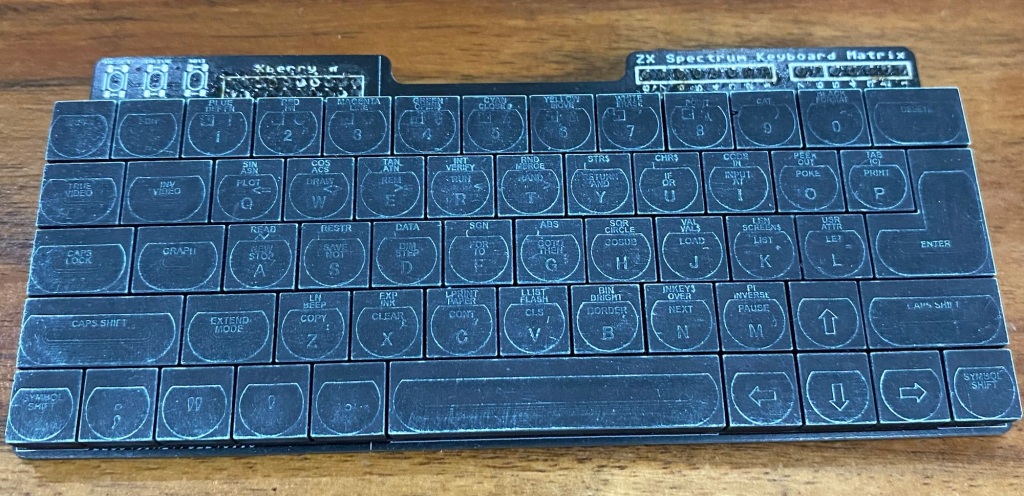
Could hardly make out the keycap legends whilst testing and sorting some bugs in the matrix.
Figured a quick bit of Dry brushing might make the words pop a little!
I’m gonna do my own personal next Mini just like this 🙂

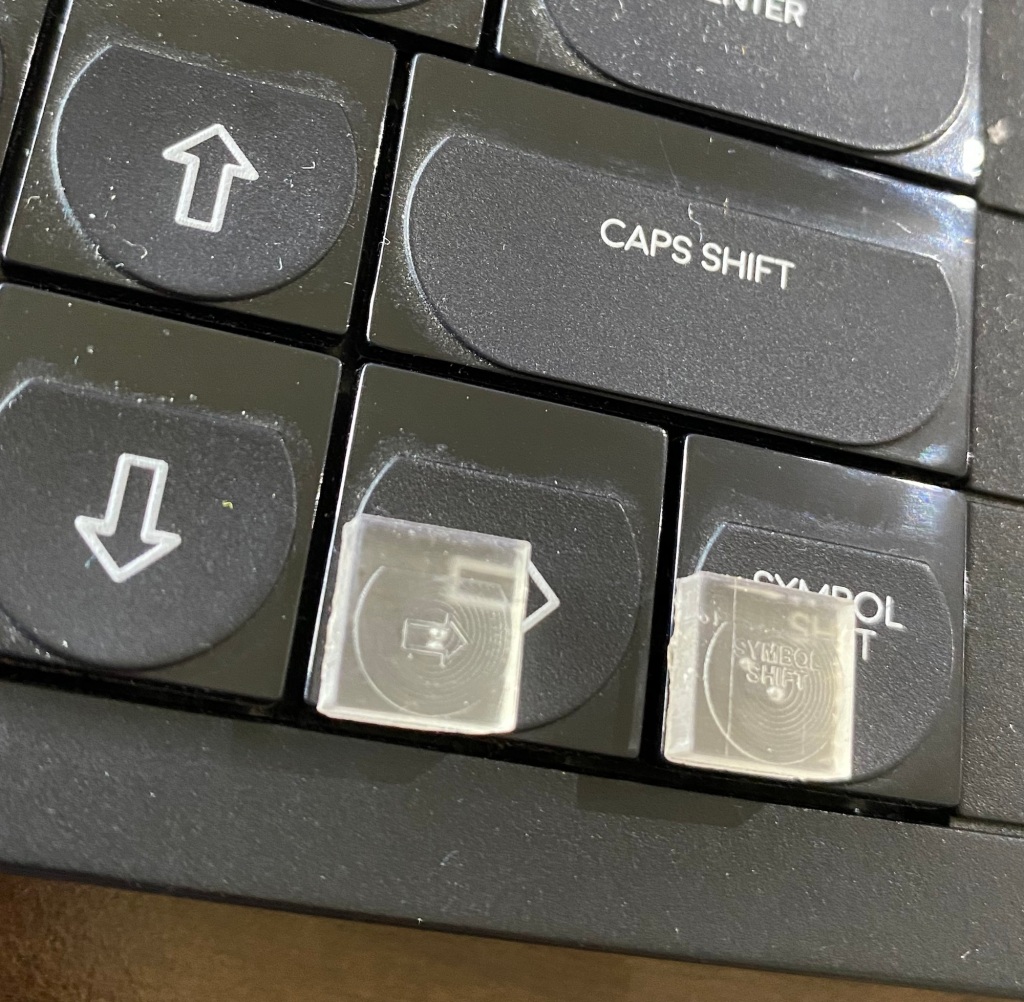
I’m going to write to those Fox’s Glacier Mints people and suggest they make tasty keycaps!
After two days of hunting, Found a paint scraper to remove the keycaps off the printer !
Also Bought some IPA to clean the keycaps up…
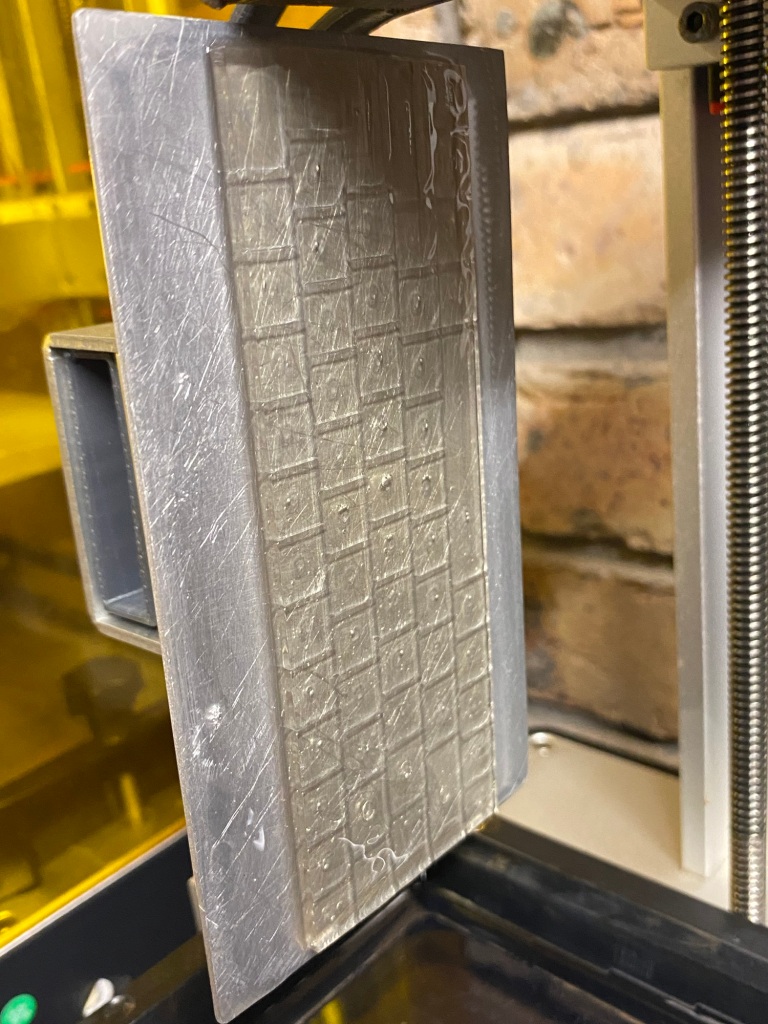
But…I’d forgot to actually prepare the slicer properly for printing.
I’d planned to just print straight on the bed without supports.
I forgot to remove the first base layers / brim / whatever it’s called so there’s no hole on the underside of the keycaps!
Ah well!
I’ll re-slice and reprint tonight, it’s an hour to print, so very quick to iterate!
Also, can’t find my curing station, and it’s raining today…d’oh!

But, forgot to buy IPA to clean the thing off once printed.
Found a Very well priced 5L of 100% IPA at Sydney Solvents for $35 delivered!
Now, if in a rush, I could pay $10 for 125ML at Bunnings
Or even a more reasonable 250Ml for $14 at Jaycar
(They even have 5L for $76!!)
But, I’m stingy, anticipate that I’ll need quite a bit (even though it took me two years to not use 5L back in the UK due to fastidious recycling)
So, summary, I’ll
Be printing key caps next week at the latest!
Then I’ll re-do the Next mini PCB a little bit too!
As suspected, a few minor goof-ups already spotted on the Next mini one, and the C64 one too. The Amiga one’s looking ok so far….
Still a few weeks of testing needed though before a production run can happen!
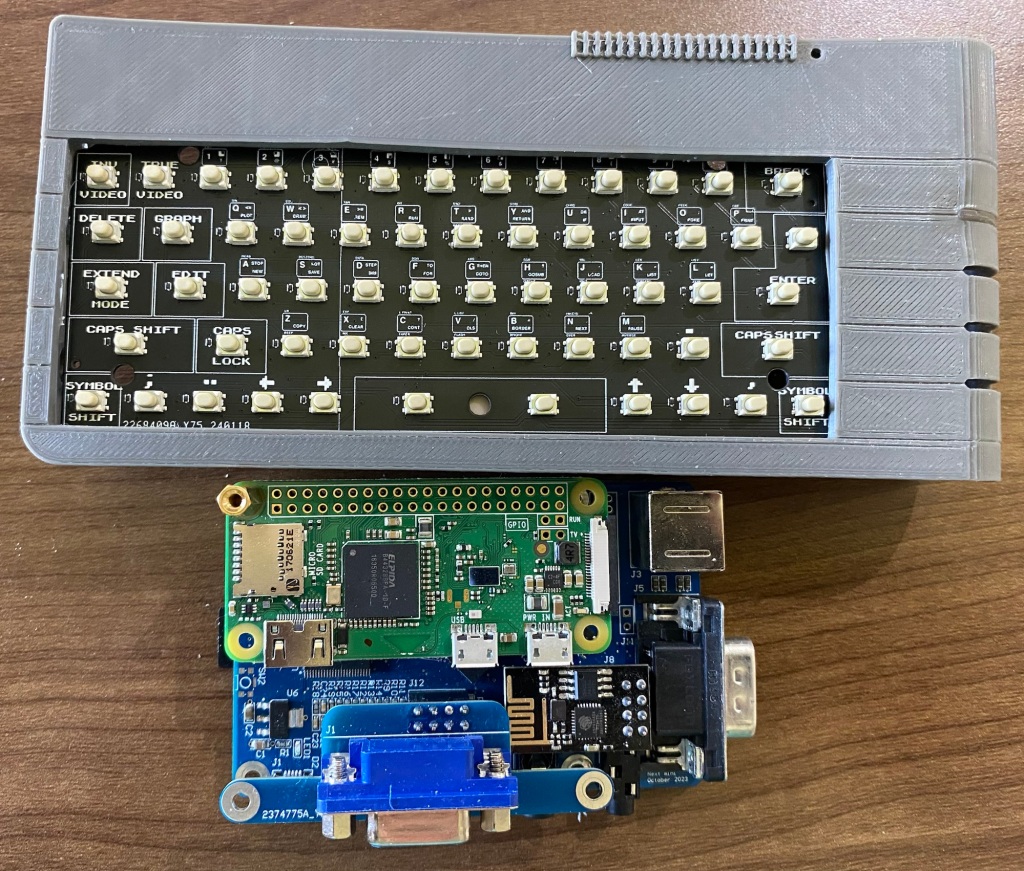


Woooo!
Should be here next week, not long till I find out how badly I’ve cocked them all up and how much work needed for a re-spin for production!
I purchased 2000 switches so can re-spin and re-test one, possibly two depending on which one (the Amiga needs 500 switches for 5 keyboards, spectrum needs far fewer!!)
Exciting times, now gotta get off my bum and fire the resin printers up.
Yep, these are WORKING keyboards for the
The A500 Mini Amiga
The C64 Mini Commodore 64
And
The Spectrum Next Mini (an Xberry Pi case) which is a 50% X &Y (100% Z) scale next mini styled case.
Back a few years ago, I ventured into making my first PCB in over 2 decades. it was motherboard to hold a raspberry pi zero, and fit within a zx spectrum case.
it was inspired a little by an article in MAGPI magazine by a Mr P J evans.
I did kind of goof it up a bit, so relegated that to the ‘ideas to do in the future’ drawer
Whilst perusing Kickstarter today, I found this –
https://www.kickstarter.com/projects/hermitretro/hermit-retro-zx-spectrum-board?ref=thanks-copy
A custom board for original and reproduction ZX Spectrum cases powered by a Raspberry Pi Zero and the Fuse emulator

So I backed it!
Have a look 🙂
it’s a far more elegant solution than I came up with.


With a successful 2nd Kickstarter – The Spectrum Next will have between 8,000 and 9,000 users.
Lets Dream a little and imagine a Bright world where all the users have a Super LED Blinkenator 2000 installed….
9000 users = nearly 40,000 inserts to be made!.
lets say just 10% want the blinkenator, I still have to make nearly 1000 of the things.
I’ve been researching a little and identifying bottlenecks to SUCCESSFULLY produce and deliver my board in those quantities
There’s some scary numbers!
So, I’m now pressing forward with TWO designs. one design, the one you’re all familiar with, suitable for small time production in small batches here and there on my weekends, only ever endeavouring to sell maybe a 150 units ever
and the second, a ‘mass produced’ item that requires minimal ‘hands on’ time from me to deliver, but will require some significant outlay up front.
The pictures above are a first run result of my Design For Manufacture for the inserts….A different injection mould, possibly 2 parts, maybe 1 and using a flexible PCB!
some key notes……..
Advantage – no connector soldering needed on my part – currently I’m soldering 16 cheap ‘bridges’ to each main board. with this insert, someone will be soldering 8 SMT FPC style connectors
Advantage – it’s likely that this design will be easier to make ‘injection moulding’ manufacturable. the existing design is tricky, but not impossible
Advantage – FPC connectors are a bit more reliable and easier to use than my bridges for the end user
Advantage – FPC / flexible PCB ‘legs’ on the inserts will mean a little bit easier installation by the end user
Advantage – Uniformity of Light – This type of construction allows for a much thicker ‘top layer’ – which will diffuse the light far more. Also, more of the insert will be better lit up ‘from below’ rather than from the side that i’m currently doing.
Disadvantage – FPC connectors are more expensive
Disadvantage – Flexible PCB’s are more fragile
Disadvantage – Flexible PCB’s are more expensive than FR4 for small quantities, so prototyping ability is very limited. at The quantities I need though, there’s not that much difference
There’s more i’m sure, once the final numbers are ready, I can see if a kickstarter makes sense, it may not be financially viable if the whole thing needs to be sold at £80 each……
if I can get closer to that £50 mark, then who knows!


This is the inserts being ‘mass produced’ at a PCBA manufacturer:-)
I’ve purchased a reel of 5000 LED’s and paid for them to make and solder them to as many boards as they can…which should be about 620 odd
Continue reading “The Super LED Blinkenator 2000 progress…”
and i’m well chuffed to say – they’re almost alive!
There’s a few teething problems however,
My ‘excellent’ idea as can be seen on my last post – https://bleughbleugh.wordpress.com/2020/05/19/spectrum-next-light-strips-more-first-light/
to use some PCB grounding spring contacts to provide a quick fit connection didn’t really pan out – the contacts simply didn’t solder on easily, too difficult to align correctly and quite weak – I tore a few pads off trying to get them aligned and correctly ‘grippy’ on the insert.
multiply that by 16 each board – the first one took me about 2 hours to get to be in an ‘ok’ state – Not really acceptable for a mass production product – not that this’ll be mass production but I’d rather not spend half a day on each of these getting them ready for sale……..
The second slight issue – See the photo below
The PCB is laid out on top the next board in the position it’ll be installed in.

There’s a prize for someone that spots the goof-up
Have a further look at the PCB powered up………..

Yeah, I got the inserts ‘back to front’ – That’s the result of working on a bottom mount PCB from the bottom…….
There’s two ways I can fix this
Simply rotate each LED by 180 degrees on the PCB and install a bodge wire to swap the input and outputs around………
OR….

I can simply re-design the LED insert and improve upon it!
a few reasons to re-design,
The first 6 LED version still has a bit of point brightness – I fear that even with the SLA printed inserts it won’t be diffuse enough..
Some statistics
8 LED’s – This should spread out the light more, reducing the hotspots a bit
0.4mm Slimmer – this lowers the LED’s further into the case, allowing much more plastic to sit above. I’m hoping this will de-focus the light more
Reversed connections to match the reversed controller board!. reversed is the new non-reversed now 🙂
New insert PCB’s are on order and should be here in a couple of weeks, I’ve bitten the bullet and ordered FIFTY….Also a few hundred more LED’s and a large tube of solderpaste.
Doing these first 10 dev boards is going to be fun – 320 1.5mm LED’s to be hand soldered!
The Controller board fits inside the case almost perfectly

I’ve slightly offset the J15 connector on my PCB to the one on the next. This offset gives a lot of friction, but needs some long term testing – the standard header I installed on one of my boards seems to work well as a friction fit. BUT, i’m not convinced that 32 LED’s, each pulling 5-20mA, (depending on which datasheet I refer to) – or between 160-800mA total depending on how I end up setting the brightness…..800mA is a LOT to pull
I’ve purchased a new gadget – A Riden RD6006 Benchtop ‘power supply’ so once i’m set up, i’ll charaterise the LED’s and current draw to set the software limits appropriatley
I doubt i’ll take nearly an amp on this board 😛
One further small mistake on the dev board –

When originally designing this controller board, I was to use a 3.3v Arduino to make it compatible with the Next’s 3v3 i2c.
For a few reasons, I’ve changed to using a 5V arduino and putting on-board a level translator device – this gives a 5V buffered i2c output that anyone can easily plug into
I forgot to change the net names….The board still ‘thinks’ the Arduino is either powered from RAW (it’s ‘unregulated input’) or 3V3 VCC…
The RAW input drops a few volts through a voltage regulator on the arduino to give the arduino a nice regulated 5V.
The next output is 5V….it’s not enough to power the Arduino through the RAW pin…
Took me quite a while – and a bit of soldering hackery to figure that one out as the speccy picked the board up perfectly when patch wired in place..
USB powered, it works perfectly
in the Next it doesnt….
The fix – I think I can just short the RAW pin to the unconnected VCC pin on this first batch –
and, finally

See that i2c device, found at address 0x45………..That’s the Blinkenlight 2000 PCB :-), alive and inside the Next!!!

I bit the bullet – and actually ordered a controller PCB! – I Bring to you…..
The Spectrum Next Super LED Blinkenator Two Thousand!
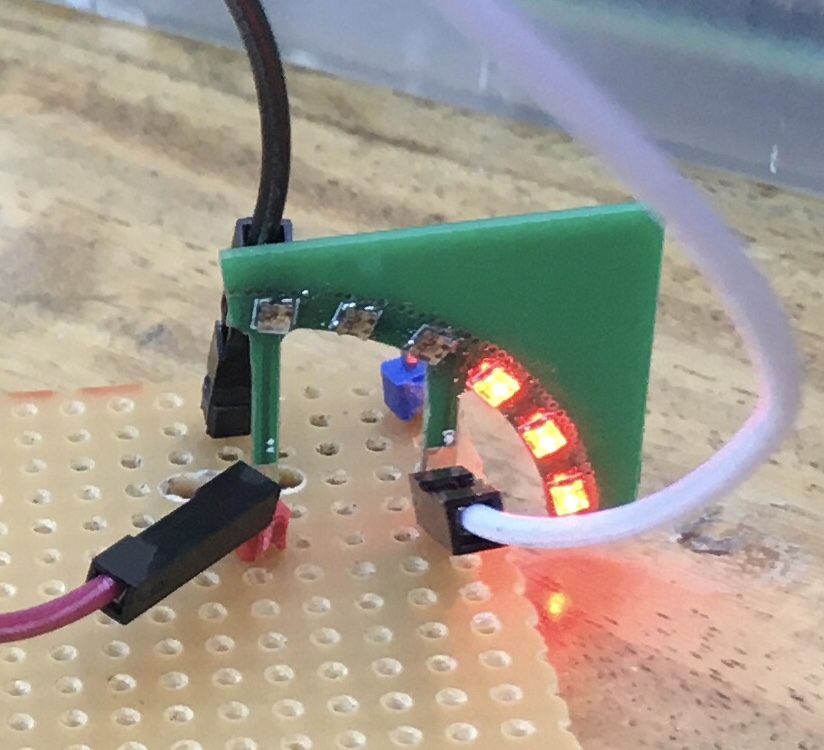
The inserts arrived – and they look fantastic
I hand soldered them using 2 year expired solder paste and a hot air gun
Continue reading “Spectrum Next Light strips – more! – FIRST LIGHT”
Back a few years ago (wow, it was that long!) I backed the Spectrum Next
Problem is, those lovely coloured bars over on the right
They’re not LED’s………….
Well, I’m gonna try to fix it……
Continue reading “Something on the side – Spectrum Next Blinkenlights”
A little something different as I work up to posting some new content after the summer hols….
If you’ve ever owned one of the 8 bit computers of the 80’s and early 90’s, this is a MUST purchase magazine…
I’ts focus is the ZX Sinclair Spectrum (AKA the speccy / rubber beermat) and last years 2017 annual was fantastic
For an absolute steal of just 15 quid, hardback!
If your significant other (or yourself) has reminisced about days gone by…or wants to see what’s happening in the scene today, get this!
https://www.kickstarter.com/projects/47744432/crash-annual-2019-issue-100/widget/card.html?v=2“>https://www.kickstarter.com/projects/47744432/crash-annual-2019-issue-100/widget/card.html?v=2
https://www.kickstarter.com/projects/47744432/crash-annual-2019-issue-100/
I present to you, my first Ever 3D print
https://www.thingiverse.com/thing:1680918
Yes, it’s a Sinclair Spectrum 48k!